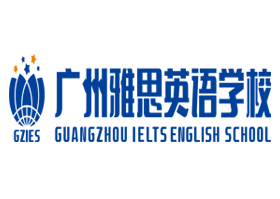很多同学在备考雅思时,不知道究竟该准备哪些备考资料。在此,推荐各位烤鸭宝宝可以从剑桥雅思真题入手。下面小编为大家带来剑桥雅思真题文本,希望能为大家提供帮助。
剑桥雅思6Test1阅读Passage1真题
AUSTRALIA'S SPORTING SUCCESS
A They play hard, they play often, and they play to win. Australian sports teams win more than their fair share of titles, demolishing rivals with seeming ease. How do they do it? A big part of the secret is an extensive and expensive network of sporting academies underpinned by science and medicine. At the Australian Institute of Sport (AIS), hundreds of youngsters and pros live and train under the eyes of coaches. Another body, the Australian Sports Commission (ASC) finances programs of excellence in a total of 96 sports for thousands of sportsmen and women. Both provide intensive coaching, training facilities and nutritional advice.
B Inside the academies, science takes centre stage. The AIS employs more than 100 sports scientists and doctors, and collaborates with scores of others in universities and research centres. AIS scientists work across a number of sports, applying skills teamed in one - such as building muscle strength in golfers - to others, such as swimming and squash. They are backed up by technicians who design instruments to collect data from athletes.They all focus on one aim: winning. We can't waste our time looking at ethereal scientific questions that don't help the coach work with an athlete and improve performance,' says Peter Fricker, chief of science at AIS.
C A lot of their work comes down to measurement - everything from the exact angle of a swimmer’s dive to the second-by-second power output of a cyclist. This data is used to wring improvements out of athletes. The focus is on individuals, tweaking performances to squeeze an extra hundredth of a second here, an extra millimetre there. No gain is too slight to bother with. It’s the tiny, gradual improvements that add up to world-beating results. To demonstrate how the system works, Bruce Mason at AIS shows off the prototypeof a 3D analysis tool for studying swimmers. A wire-frame model of achampion swimmer slices through the water, her arms moving in slow motion. Looking side-on, Mason measures the distance between strokes. From above, he analyses how her spine swivels.When fully developed, this system will enable him to build a biomechanical profile for coaches to use to help buddingswimmers. Mason's contribution to sport also includes the development of the SWAN (Swimming Analysis) system now used in Australian national competitions. It collects images from digitalcameras running at 50 frames a second and breaks down each part of a swimmer's performance into factors that can be analysed individually - stroke length, stroke frequency, average duration of each stroke, velocity, start, lap and finish times, and so on. At the end of each race, SWAN spits out data on each swimmer.
D ‘Take a look,' says Mason, pulling out a sheet of data. He points out the data on the swimmers in second and third place, which shows that the one who finished third actually swam faster. So why did he finish 35 hundredths of a second down? ‘His turn times were 44 hundredths of a second behind the other guy,' says Mason. ‘If he can improve on his turns, he can do much better’. This is the kind of accuracy that AIS scientists' research is bringing to a range of sports. With the Cooperative Research Centre for Micro Technology in Melbourne, they are developing unobtrusive sensors that will be embedded in an athlete's clothes or running shoes to monitor heart rate, sweating, heat production or any other factor that might have an impact on an athlete's ability to run. There's more to it than simply measuring performance. Fricker gives the example of athletes who may be down with coughs and colds 11 or 12 times a year. After years of experimentation, AIS and the University of Newcastle in New South Wales developed a test that measures how much of the immune-system protein immunoglobulin A is present in athletes'saliva. If IgA levels suddenly fall below a certain level, training is eased or dropped altogether. Soon, IgA levels start rising again, and the danger passes. Since the tests were introduced, AIS athletes in all sports have been remarkably successful at staying healthy.
E Using data is a complex business. Well before a championship, sports scientists and coaches start to prepare the athlete by developing a ‘competition model', based on what they expect will be the winning times. ‘You design the model to make that time,' says Mason. ‘A start of this much, each free-swimming period has to be this fast, with a certain stroke frequency and stroke length, with turns done in these times.' All the training is then geared towards making the athlete hit those targets, both overall and for eachsegment of the race. Techniques like these have transformed Australia into arguably the world's most successful sporting nation.
F Of course, there's nothing to stop other countries copying-and many have tried. Some years ago, the AIS unveiled coolant-lined jackets for endurance athletes. At the Atlanta Olympic Games in 1996, these sliced as much as two per cent off cyclists' and rowers' times. Now everyone uses them. The same has happened to the ‘altitude tent', developed by AIS to replicate the effect of altitudetraining at sea level. But Australia's success story is about more than easily copied technological fixes, and up to now no nation has replicated its all-encompassing system.
以上就是广州雅思网今天为大家分享的剑桥雅思真题4-13(节选篇)相关内容,想要了解更多剑桥雅思真题及答案解析,欢迎及时关注本站!
广州雅思英语学校成立于1999年,现任校长是有中国雅思“教父”之称的中国社会科学院博士、中国雅思教育开拓者,资深留学教育专家万昌明博士。广州雅思英语学校是国内最早的专业雅思学校之一,也是英语IELTS考试中文“雅思”命名的首创者之一。十九年来, 广州雅思英语学校秉承“教育以学生为本,以质量为先”办学宗旨,坚持“知识、激情、励志”的教学理念,发展成为华南乃至中国最大的雅思学校之一。



